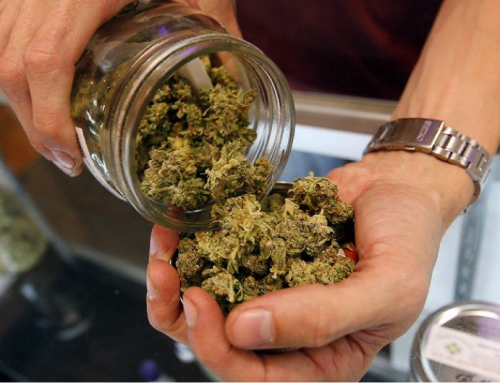According to a Gallup poll, support for legalization of cannabis has risen steadily—from 12 percent in 1969, to 31 percent in 2000, to 64 percent in 2017. Following this year’s cannabis elections across the nation, 59.3 percent of the residents in the U.S. reside in a state where marijuana has been legalized, at least to some degree. Twenty-eight states and Washington D.C. have made mmj legal, while nine states and Washington D.C. have legalized the recreational use of cannabis for those over the age of 21.
The Legal Medical Marijuana Market Will Grow Exponentially
Researchers estimate the legal marijuana market will grow by $7-$8 billion as legalization expands, building to a $21.8 billion dollar business by 2020. Support for the legalization of cannabis appears to transcend political party lines, considering that three states which passed medical marijuana laws voted largely Republican. Despite the medical and recreational legalization of marijuana across the nation, on the federal level cannabis remains a Schedule I drug under the Controlled Substances Act.
The Number of Youth Who Have Tried Cannabis Has Decreased Since Legalization
Although Kurt Isaacson, president and CEO of Spectrum Health Systems is a vocal critic of legalization, claiming it is detrimental to the health of the public, data on medical and recreational usage gives a vastly different picture than Isaacson’s claim that “When states legalize recreational marijuana, fatalities increase and the lives of children and teenagers are put at stake.” In fact, studies have shown that the recreational legalization of cannabis does not result in more young people using cannabis. Across the nation, the number of teens who admit to using marijuana within the past month rose for several years, then leveled out in 2010.
Following legalization in Colorado, Alaska, Oregon and Washington, the number of students who said they had used cannabis remained stable—or decreased slightly. While Isaacson claims that young people in the state of Colorado use cannabis at a higher rate than teens of the same age across the U.S., experts on the subject believe this trend was in existence prior to recreational legalization. According to the New England Journal of Medicine, legalizing medical marijuana in Colorado does not appear to have increased the number of youth who use cannabis, and, in fact, this article states that the percentage of teens in Colorado who report ever trying cannabis has actually decreased since legalization.
Traffic Deaths Have Not Increased Since the Legalization of Recreational Marijuana
Critics of the legalization of marijuana want us to believe that driving while high has vastly increased in the states where recreational use of the drug is legal. While driving high—or drunk—is certainly never a good idea, according to the NHTSA, traffic deaths have not increased in either of the first states to legalize recreational marijuana—Washington and Colorado. During the same period of time, instances of DUI appear to have decreased since marijuana was legalized.
Legalizing Medical Marijuana Reduces the Number of Opioid Overdoses
Considering the current opioid crisis, the following information should be seriously considered by officials in all states. Several studies have shown that states which have legalized the use of medical marijuana have significantly fewer opioid deaths. In fact, states that pass medical marijuana laws have seen a 20 percent lower rate of opioid deaths in the first year of medical marijuana legalization, 24 percent in the third year of legalization, and 33 percent in the sixth year.
Colorado and Washington Enjoying Revenues from Recreational Legalization of Cannabis
Taxing and selling cannabis in Colorado and Washington has been wildly successful in generating revenue for the states—revenues in both states have exceeded projections. The state of Colorado brought in $120 million in the second year of legalization and Washington state brought in $220 million in the second year of legalization.
California the First State to Approve Medical Marijuana
California was actually the first state to legalize the use of medical marijuana in 1996. More states quickly followed suit, and it appears many more are considering legalizing cannabis for medical use, if not recreational use. In states where medical marijuana is legal, those suffering from a variety of ailments may, with a physician’s order, procure medical marijuana, usually for glaucoma, social anxiety, pain alleviation, seizures, and to help with the side effects of cancer treatments.
In 1970, the Controlled Substances Act was passed, which placed drugs in categories or “schedules,” depending on the perceived use for medical issues and the potential for abuse. At that time, cannabis was classified as a Schedule 1 drug—a high potential for abuse and no valid medical use. While it seems almost unbelievable, marijuana was in the same category as LSD and heroin. The ability of states to legalize medical and recreational marijuana is a triumph of the “average citizen” over a system which has unnecessarily imprisoned huge numbers of non-violent marijuana users over the past few decades. Those who are facing criminal marijuana charges should contact an experienced criminal defense attorney as quickly as possible.



